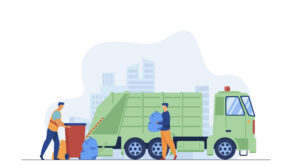Future Tech for America: 5 Expectations for Smart Cities We Might See Soon
Smartphones, smart lights, smart TVs—these are some of the devices making the biggest waves in tech right now. But in the future, the Internet of Things (IoT) will be scaled up to a degree that we can barely imagine right now. From smart buildings to smart neighborhoods, all the way up to smart cities, the next decade is likely to bring a wave of large-scale IoT that will usher in a new era of connected infrastructure.
In the future, an electrical enclosure box mounted on the corner telephone pole might contain everything from a motion sensor that automatically activates streetlights when people walk by to a traffic sensor that keeps people informed about current conditions. The potential applications are nearly limitless—but here are five key trends that can help us figure out what smart cities will mean to us in the near future.

Source: HQuality/Shutterstock
Smart power grids and renewable energy will make big inroads
Technologies like wind farms and solar panels have already become some of the most important infrastructure investments for the future of urban energy. To build a world that relies on clean energy, however, we need a smarter and more flexible electrical grid. Smart city technology will be a key part of developing these smart grids that will support the energy structures of tomorrow.
Smart grids take big tech trends like predictive AI and apply them to energy management. Cities can use machine learning to analyze historical utility data and forecast future trends, or integrate weather forecasting models to find the most efficient deployment of wind and solar resources.
As renewable energy tech improves, it will also become easier to tailor its implementation to local conditions. Cities where ground space is tight could embrace rooftop solar, while ones with highly variable weather could buy power from areas with more consistent sun or wind. These applications, however, will require continued municipal investment in highly built out smart electrical grids.
The digital public square will be more omnipresent
Apps from Facebook to Nextdoor have already given us a “digital commons” where community members can voice their opinions on local issues and arrange ways to come together. The smart cities of the future will vastly expand this capability into applications like participatory budgeting, community events planning and constituent services.
One day, neighborhood residents might vote directly on certain issues as seamlessly as they vote in Instagram polls today. Someone who needs a pothole fixed on their street could send a pin of it to their road maintenance department as easily as they report a wreck on Waze now. Residents could use augmented reality tech when strolling their neighborhoods to learn about historical events and local landmarks.
Of course, maintaining civility and accountability in the digital square will be a challenge. Like every other piece of smart city tech, it will require a continuing effort to ensure that these tools are used to build trust rather than foment discord. And, as the popularity and subsequent controversy of some digital common apps shows, these platforms are already here and already shaping the way we interact, so a proactive approach is urgently necessary.
Public service and private enterprise will develop new roles
Which smart city services should be provided by a city government, and which should be delegated to private enterprise? There will be all kinds of interesting questions to answer as the roles of the public and private tech spheres continue to evolve, and there will be plenty of opportunities for public-private collaboration and innovation.
These opportunities are especially important for cities that want to build up their tech sectors (which is pretty much every city). Whether the local government funds its new apps publicly or contracts a private company to do it, it will help attract tech workers to the city either way, so long as it commits to paying them appropriately.

Source: Halfpoint/Shutterstock
Standardization organizations will develop robust standards for smart city tech
Standardization is an important part of the evolution of any technology. It helps foster the development of competition, improves the safety and efficacy of new technologies and removes friction from the user experience. That’s why developing safety, privacy and interoperability standards is shaping up as a top priority for the next wave of smart city tech.
Right now, there’s relatively little standardization of the various forms of smart city technology. A more standardized smart city landscape will encourage more resilient and reliable technologies. For example, applications that require an outdoor electrical junction box can be specified to use a NEMA 4 enclosure to keep the device within safe, and interoperability standards can improve market efficiency and reduce barriers to implementation.
It’s also important to speed up the pace of regulation for smart cities. In particular, privacy concerns about what smart city technologies do with people’s data are likely to continue growing.
Slowly but surely, 5G will transform the urban landscape
With major phone manufacturers now offering flagship 5G models, 2021 seems like it could be the year 5G truly goes mainstream. That’s big for smart cities because 5G is the secret sauce behind many key technologies that will define the next wave of urban IoT.

Source: Thomas Andreas/Shutterstock
The future urban landscape, in which smart traffic lights talk to self-driving cars and smart sprinklers can automatically adjust their water use in a drought, requires huge amounts of wireless data on tap. 5G provides the necessary bandwidth, and the speed at which telecom companies can roll out 5G capacity will be a major factor in how fast smart cities develop.
As 5G gains a firmer footing in cities, expect to see a corresponding wave of investment in smart city technologies. Once tech leaders and governments see that the bandwidth they need is available, smart city projects likely won’t be far behind.
















